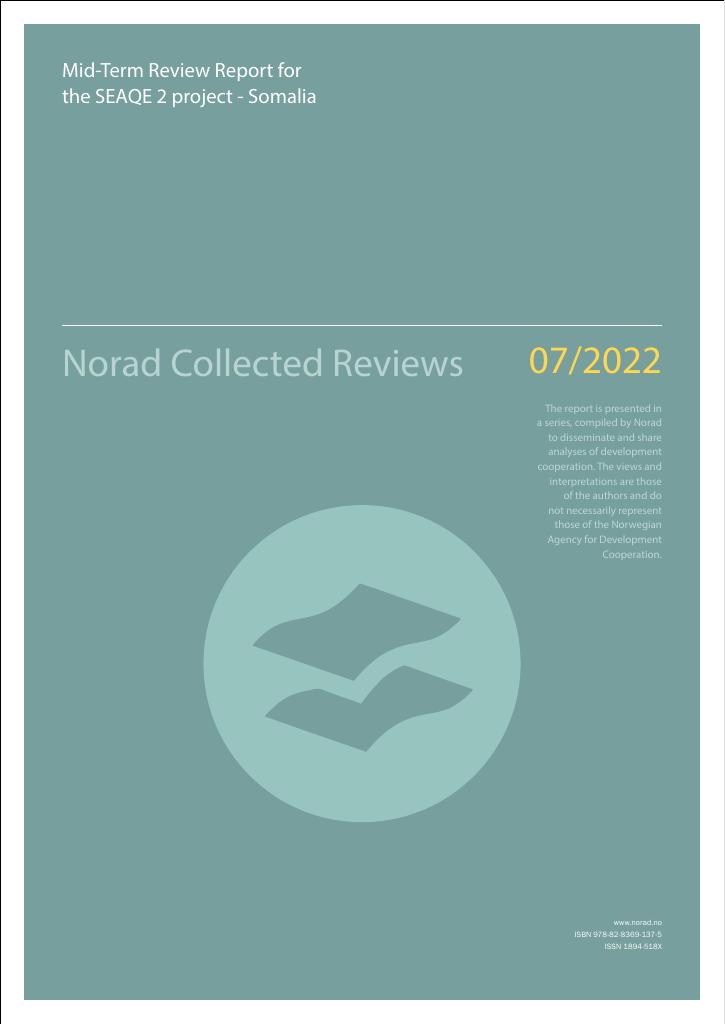Evaluering
Mid-Term Review Report for the SEAQE 2 project - Somalia : Desentralisert evaluering/Norad Collected Reviews 7-22
The SEAQE 2 project is focused on girls and boys to access, engage and learn in inclusive primary and Technical Vocational Education Training (TVET) in Somalia. SEAQE 2 is strongly focused on developing education pathways for marginalised children, including Out of School Children (OOSC), children with disabilities, minority clans and internally displaced children. In this phase of the program, emphasis was given to improving wellbeing, economic opportunities and the capacity of civil society and the government. The result being that SEAQE 2 would contribute to strengthening equitable access, participation and learning outcomes within improved learning environments and strengthen the education system. Prior to the start of SEAQE 2, Somalia remained unstable due to conflict, despite progress towards state formation. Conflicts are driven by ethnic / clan-based grievances over political exclusion, discrimination and competition over resources and more than 2.1 million people (two thirds of whom are children) have been displaced because of drought, food insecurity and conflict. Somalia is among the world’s poorest nations, with poverty rates at 73 percent of the population. Half of Somalia’s population is under 15 years and 75 percent of the population is under 30 years. Yet, public expenditure on education is only 5 percent and government social service systems and capacities are weak. In the first year of SEAQE 2, the intensity of terror attacks increased. They included a truck bomb at a security checkpoint in Mogadishu killing at least 78 people, including students, the worst attack in Mogadishu since 2017. At the same time, relations between the federal government and federal state members deteriorated, diverting attention from needed reforms. This included election disputes for the presidency in Jubaland State which soured relations between the federal government and the Jubaland State. This created significant tensions over the selection of SEAQE 2 target areas/ schools, which were ultimately not negotiated and agreed until February 2020, when government permissions for the SEAQE 2 project were finally granted (see conflict sensitivity). Within the education sector, implementation of the Education Sector Strategic Plan (ESSP 2018 - 2020) provides a shared agenda for the education sector for a five-year period (2018 - 2022 ) is underway. Achievements to date include the development of the first unified curriculum and the implementation of a standardised exam system. A lack of reliable data on children’s learning outcomes at the primary level remains a significant challenge with plans to introduce early grade assessments and low-stake assessments for monitoring learning outcomes, a goal of the ESSP.
